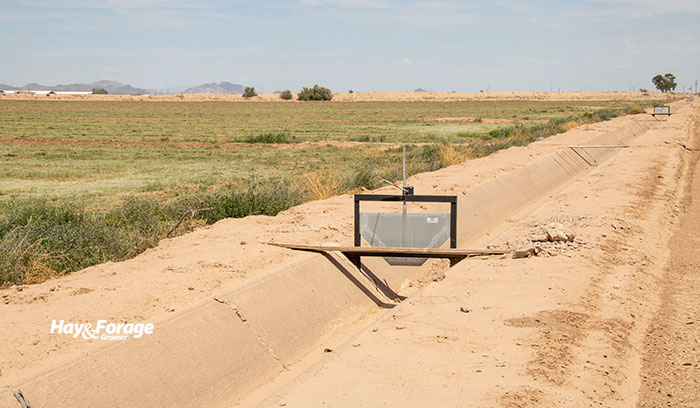
I just returned from south central Missouri where repeated heavy rains have left hayfields and pastures in a bog-like condition. Such is not the case in many parts of the western U.S. where bogs are only dreamt about, and alfalfa fields are already parched with little relief in sight.
“Our normally wettest months of January through April were some of the driest on record for California in 2022, which does not bode well for alfalfa and other crops,” laments Dan Putnam in a recent blog post. The University of California Cooperative Extension forage specialist writes that many of his state’s alfalfa fields dried out well before the first cutting.
The most current drought monitor map has 77% of the Western region in a severe, extreme, or exceptional drought. Toss in another 14% for those “lucky” individuals who are only in a moderate drought.
Over 95% of the alfalfa grown in the West relies on irrigation water, but those water resources are being stretched to their limit in many cases. Available water for growers will be a fraction of what is typically allocated.
Fewer alfalfa acres, dry conditions, and high input prices have sent top-quality delivered alfalfa hay prices soaring to over $400 per ton in California’s Central Valley.
Putnam notes that a fully irrigated alfalfa crop requires a certain amount of water for full production, and alfalfa yield is directly related to applying water equal to the evapotranspiration (ET) levels of the crop.
“At Davis, Calif., the yearly water demand for alfalfa is about 40 inches, but the amount needed is closer to 50 to 54 inches in the southern San Joaquin Valley due to the longer season and higher heat,” Putnam explains.
Dealing with less water
The forage specialist notes that there are several strategies that can be implemented by alfalfa growers to ease the water-shortage pain.
The first approach he refers to as triage, which entails moving limited water sources to only the best fields. This requires that the lowest producing fields be allowed to go fallow this year.
“Many growers do this, moving water to only the highest return crops,” Putnam asserts. “However, alfalfa is an excellent economic option with such high hay prices, and production of good stands of alfalfa, even with expensive water, is likely to be profitable in a year like this.”
A second strategy is the starvation diet. With this approach, less water is used at each cutting. If, for example, 7 to 9 inches is typically applied per month, only half of this amount would be applied. This is not a practice that Putnam recommends to follow when water is in short supply. The “starvation diet” approach results in much lower yields, stressed crops, and early flowering, the forage specialist notes.
Putnam refers to his final strategy as the “cold turkey summer dry down.” This approach requires a full irrigation to ET during the first several growth periods in the spring followed by a sudden summer cut off of irrigation water when it becomes necessary.
“The field will go dormant, and there will be no further yield after irrigation ceases, but the stand will generally recover once it gets watered again or rains return,” Putnam explains.
For many growers, the forage specialist recommends a hybrid strategy — choose only the best fields to water and then water them fully during the early part of the year.
“Make sure that the soil profile is as fully supplied with water as possible early in the season,” Putnam emphasizes. “Then, if necessary, cut down on irrigation in the late part of the season.”
He prefers this approach because the highest quality, highest yielding cuttings come early in the season. Lower yields are typical of later cuttings, even if fully watered, so the yield impact is less when those late cuts are not watered. Alfalfa often goes into a dormancy state when not watered and then can recover in the winter or spring.
Finally, Putnam reminds growers to test their forage for nutrient deficiencies.
“Drought-stressed roots are less able to obtain nutrients from the soil,” he shares. “Test to make sure that phosphorus, potassium, sulfur, and micronutrients are not limiting to growth. Although fertilizer prices are high, it's important to maximize yields to take advantage of scarce water. Many growers go years without soil or plant testing, and it’s time to change that practice,” he adds.
For more information on alfalfa’s response to reduced irrigation, read Putnam’s blog post.

